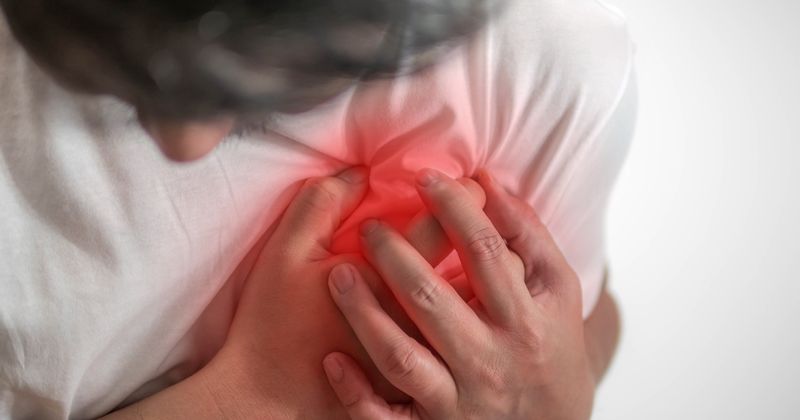Chest pain 1 year after heart attack points to worse long-term survival
Key takeaways:
- Chest pain 1 year after a heart attack was associated with an up to twofold increased risk for mortality vs. no pain.
- Chest pain was more prognostic of death than smoking status.
Moderate to extreme chest pain reported 1 year after an MI may be indicative of increased mortality risk, according to a study published in the Journal of the American Heart Association.
“Pain causes significant loss of function and may lead to disability, all of which contribute to major, global public health issues. Research indicates that pain is linked to higher risk of cardiovascular disease and overall death; however, the impact of pain on death after a heart attack has not yet been examined in large studies,” Linda Vixner, PT, PhD, associate professor of medical science at the School of Health and Welfare at Dalarna University in Falun, Sweden, said in a press release.

Image: Adobe Stock
Using data from the SWEDEHEART registry, Vixner and colleagues evaluated data from 18,376 patients with a MI event (39.4% with STEMI) from 2004 to 2013 and self-reported levels of chest pain according to the EuroQol-5 dimension instrument at 1 year follow-up (mean age, 62 years; 25% women).
Follow-up data were collected through 8.5 years after the 1-year visit.
Overall, 76.7% of patients underwent primary PCI and 3.9% underwent CABG.
Moderate chest pain was reported by 38.2% of the cohort, while 4.5% reported extreme pain.
Those reporting moderate to severe chest pain more often had traditional CV risk factors, had a history of CVD, were current smokers and had elevated BMI and waist circumference compared with those reporting no pain (P for all < .0001).
The researchers reported that the adjusted risk for mortality at 8.5 years was 35% greater among those reporting moderate chest pain (adjusted HR = 1.35; 95% CI, 1.18-1.55) and more than twofold greater among those reporting extreme pain (aHR = 2.06; 95% CI, 1.63-2.6) compared with those reporting no pain.
Vixner and colleagues added that reports of extreme chest pain 1 year after MI was a stronger predictor of mortality compared with smoking status (C-statistics, 0.6 vs. 0.55).
“After a heart attack, it’s important to assess and recognize pain as an important risk factor of future mortality. In addition, severe pain may be a potential obstacle to rehabilitation and participation in important heart-protective activities such as regular exercise; reduced or lack of physical activity, in turn, increases risk,” Vixner said in the release. “For patients with pain, it is of particular importance to reduce other risk factors, such as smoking, high blood pressure and high cholesterol levels.”
Reference:
- Experiencing pain after a heart attack may predict long-term survival. https://newsroom.heart.org/news/experiencing-pain-after-a-heart-attack-may-predict-long-term-survival. Published Aug. 16, 2023. Accessed Aug. 16, 2023.
